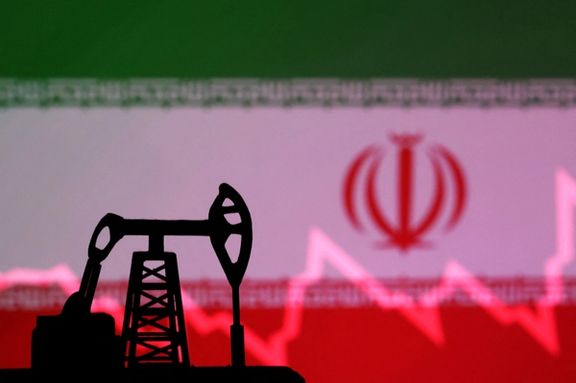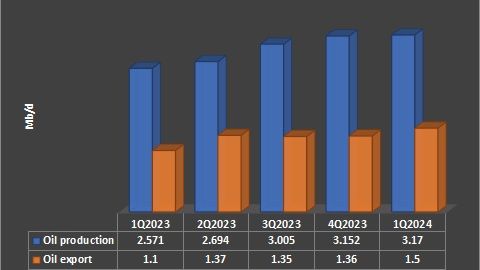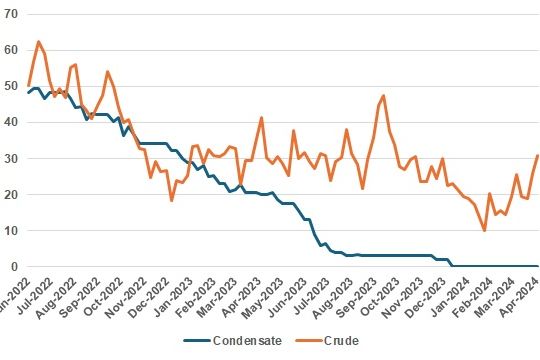Iran Ramps Up Oil Exports By Relying On Floating Storage

While Iran’s oil production remained largely unchanged, the country was able to increase its oil exports by selling millions of barrels from floating storage during the first quarter of 2024.

While Iran’s oil production remained largely unchanged, the country was able to increase its oil exports by selling millions of barrels from floating storage during the first quarter of 2024.
Oil production increased by only 18,000 barrels per day in the first quarter of the year to 3.188 million barrels per day (mb/d), compared to the last quarter, indicating a mere 0.5% growth in quarterly production, according to OPEC.
The country’s oil production growth has slowed dramatically since last summer.
Due to the sale of tens of millions of barrels from floating storage, Iran's oil exports increased significantly in 1Q24 to 1.5 mb/d, according to estimates by Kpler which provides real-time data on global commodity movements.
After the United States imposed sanctions on Iran’s oil exports in 2018, the country's oil exports declined from 2.6 mb/d to 330,000 barrels by late 2019 – leading to the stockpiling of about 110 million barrels of unsold oil on both water and land.
During President Joe Biden’s administration, however, the Islamic Republic was able to increase oil exports to its only customers: China and Syria.
Last year for instance, Iran exported about 1.3 mb/d of crude oil and gas condensate, 48% more than the previous year – of which 95% went to Chinese independent small refineries, called “teapots”.
A senior expert at Kpler told Iran International that the volume reached 1.5 mb/d in January-March 2024.

Kpler’s data indicates a significant increase in Iran’s oil exports during the first half of 2023, followed by a slight decline in the latter half of the year. Export growth then picked up again in the first quarter of 2024, although OPEC data suggested only a marginal increase in production levels.
The significant quarterly increase in exports by 140,000 b/d, despite a production growth of only 18,000 barrels in 1Q24, can be attributed to Iran selling more than 16 million barrels from floating storage during January-March 2024.
The process of oil transferring from Iran to China typically takes about three to four weeks.
According to Kpler’s statistics, Iran's floating oil storage decreased from 26.5 million barrels in early December 2023 to 10 million barrels in early February 2024.

Iran’s floating storage from June 2022 to mid-April 2024 (mb):
Source: Kpler
The statistics show that Iran's floating storage level doubled to 30 million barrels in mid-April, compared to the level in early March.
Although there are no statistics available about Iran’s oil production and export levels in April, the significant increase in floating oil levels indicates that Iran's oil exports likely declined during that month.
Oil revenues
Iran's oil export volume increased by 44% in the last Iranian fiscal year, ending on March 19, despite a 17% decrease in global oil prices. However, the country’s customs statistics indicate that oil export revenues only grew by 8% during this period.
According to Iranian customs data, the total value of oil and oil products (including mazut) exported by Iran amounted to $36 billion in the last fiscal year.
But, considering Iran's export levels of 1.3 million barrels per day (mb/d) of crude oil and gas condensate, along with 0.2 mb/d of mazut, and factoring in global oil prices, Iran's total oil export revenues should have exceeded $44 billion.
This suggests that approximately 19% of Iran's oil revenues were lost due to factors such as expenses related to bypassing US sanctions, including middlemen costs, ship-to-ship operations, and direct discounts offered to Chinese refineries.
Iran offered Chinese “teapots” approximately $13 per barrel in 2023 to maintain its market share, Reuters reported.
Additionally, the head of the Budget and Planning and Auditory Commission of the Iranian parliament stated on April 13 that Iran imported $2 billion worth of gasoline during the last fiscal year to compensate for fuel shortages.
Iran began importing gasoline in March, primarily from Russia and neighboring Southern countries.